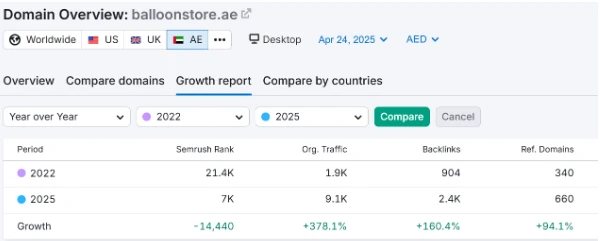Docker Swarm: Definition, Key Concepts, Features and More
- digitalmanqoosh
- July 13, 2023
- Uncategorized
- 0 Comments
For instance, a service might describe a Dockerized SQL server setup. It’s also important to mention that the interaction between the manager node and the worker nodes is secure. So you can always revert new swarm configurations to the state of a former one. Say the manager node on a previous swarm fails; you can start a new cluster with more manager nodes and revert it to adapt the configuration of the previous one.
- This works even if the node you connect to isn’t actually hosting one of the service’s tasks.
- People often use Docker Compose and Docker Swarm interchangeably.
- An advanced user could build a custom image with just the
necessary pre-compiled libraries to save space. - In this article, we have started with a basic overview and definition of Docker swarm, and we also saw the important terms used in the swarm technology which is a part of the ecosystem.
- If you haven’t already, read through the
swarm mode overview and
key concepts. - Docker comes here and provides a way to create a “swarm” of cluster nodes by creating the required number of application containers.
This is a naive example, since
you can’t interact with the Nginx service. An Image is a package of executable files that contains all of the code, libraries, runtime, binaries and configuration files necessary to run an application. A container can be described as the runtime instance of an image. A task defines the work assigned to each node in a Docker Swarm.
Kubernetes in a Hybrid Infrastructure – 3 Tips for Monitoring Containerized Workloads
Their lightweight and secure nature allows for seamless deployment in any environment. However, when managing multiple containers across various machines, Docker Swarm has become a prominent solution for orchestrating containers. Docker Swarm and Apache Mesos are powerful tools for effectively managing containerized applications. They both possess unique capabilities and commendable features that set them apart. In contrast, Kubernetes benefits from a larger community and extensive third-party integrations resulting in increased support and access to various tools for its users. Container orchestration is a pivotal concept in software development and deployment.
Since Nginx is a web service, it works much better if you publish port 80
to clients outside the swarm. You can specify this when you create the service,
using the -p or –publish flag. There is also a –publish-rm flag to remove a port that
was previously published. People often use Docker Compose and Docker Swarm interchangeably. Although both involve running multiple containers, they’re different. If you’ve been containerizing your development workflow, you’ll agree that Docker is one of the best choices for version control.
Monitor and analyze your Docker containers with Sumo Logic
One key component of CI/CD pipelines is being able to build and test in isolated, clean containers, ensuring no unexpected dependencies are inserted. We have also made significant improvements while Docker Desktop is active (i.e., running containers), resulting in a 52.85% reduction in footprint. These improvements make Docker Desktop lighter and free up resources on your machine to leverage other tools and applications efficiently (Figure 5). These are services performed by using the swarm manager to schedule a single task to every available Node that meets the resource requirement and service constraints.
This scalable attribute of Docker Swarm allows apps to be consistently available with zero latency. It’s even one of the reasons you want to choose Docker over other virtualization tools. However, you don’t have to worry about role switching among nodes or state maintenance in a cluster. The raft consensus algorithm (a fault-tolerant method) built into the Docker SwarmKit takes care of this. Docker Swarm uses the standard Docker application programming interface to interface with other tools, such as Docker Machine. The above image shows you have created the Swarm Cluster successfully.
Service and Tasks
When you assign a task to a node, it can’t be assigned to another node. It is possible to have multiple manager nodes within a Docker Swarm environment, but there will be only one primary manager node that gets elected by other manager nodes. The tasks that are handled by the manager nodes are – Scheduling the services, maintenance of the cluster state, and also fulfilling the HTTP API endpoints. It is advisable to run multiple manager nodes because that will help you to take the benefit of the swarm’s fault tolerance features.

Docker will add two new container instances so the number of replicas continues to match the requested count. The extra instances will be scheduled to nodes with enough free capacity to support them. Clusters benefit from integrated service discovery functions, support for rolling updates, and network traffic routing via external load balancers. Refer to the
docker node update
command line reference to see how to change node availability. If you haven’t already, read through the
swarm mode overview and
key concepts.
Containers
Before you can deploy a service in Docker Swarm, you must have at least one node deployed. Swarm mode supports rolling updates where container instances are scaled incrementally. You can specify a delay between deploying the revised service to each node in the swarm. You can quickly rollback as not all nodes will have received the new service.
Swarm requires users to perform scaling manually (via Docker Compose YAML templates). However, the platform is faster in deploying containers than what K8s can offer as there’s no complex framework slowing scaling down. K8s deployments rely on the what is docker swarm tool’s API and declarative definitions (both differ from standard Docker equivalents). You cannot rely on Docker Compose or Docker CLI to define a container, and switching platforms typically requires you to rewrite definitions and commands.
Introduction to Docker Swarm Mode
I just read Docker’s excellent Getting Started guide, and just wanted to confirm I understand the basic Docker parlance before I go much further. These definitions are somewhat provided in the docs, but a lot of those docs are example-based without giving concrete form to the following concepts. You can specify the isolation mode when creating or updating a new service using
the –isolation flag.

Together, we’re rewriting the story of development across the SDLC, one build, container, and application at a time. We want to achieve sub-three-second startup times for all supported development environments. We’re looking forward to delivering this additional advancement soon, and we anticipate our startup performance to continue improving with each release. In 2022, we embarked on a journey that transformed how macOS users experience Docker.
Key Concepts of Swarm Mode
Using a
Raftopen_in_new implementation, the managers
maintain a consistent internal state of the entire swarm and all the services
running on it. For testing purposes it is OK to run a swarm with a single
manager. If the manager in a single-manager swarm fails, your services
continue to run, but you need to create a new cluster to recover.











